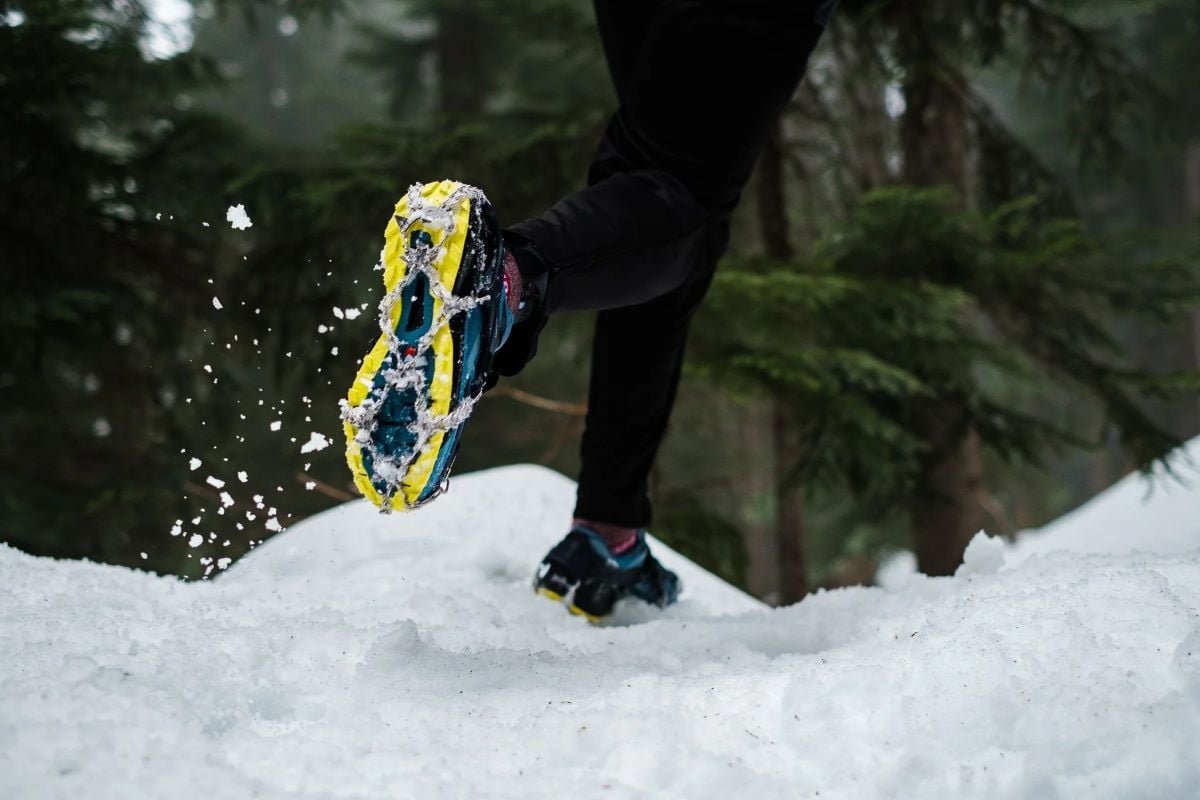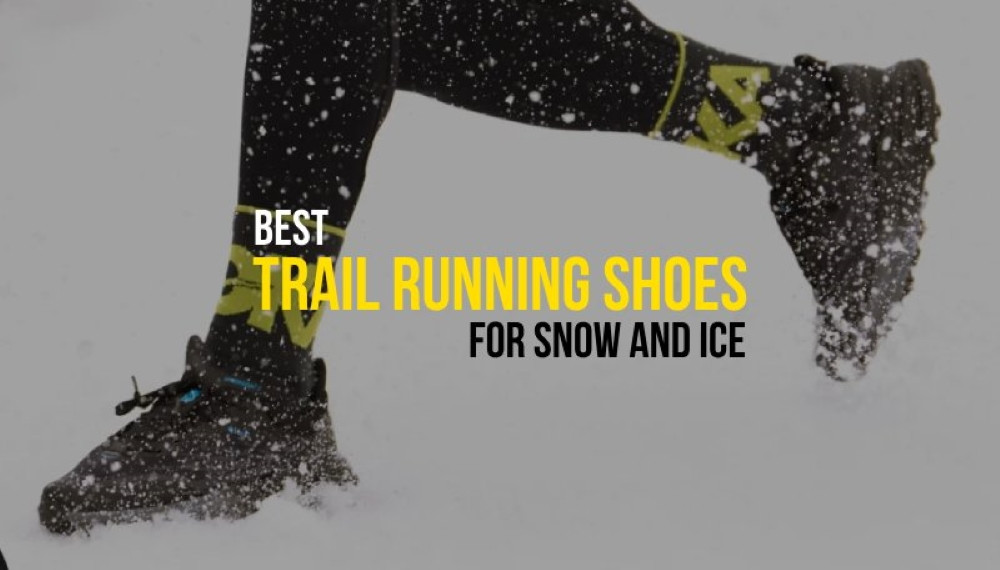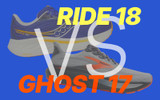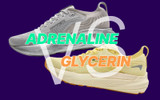Best Winter Trail Running Shoes in 2024: Shoes for Ice & Snow
In this post, we’ll provide some of the best trail running shoes for winter and cold weather. But before, let’s briefly talk about things you should consider when picking winter running shoes.
How to Pick Winter Trail Running Shoes
Choosing winter trail running shoes has much in common with selecting trail shoes for warmer weather. You'll need to consider the same factors, such as support for overpronation, your preference for a firm or plush feel, high, low, or zero drop, and whether you need regular or wide sizes. However, winter conditions introduce additional requirements. Specifically, your winter running shoes should offer water resistance, warmth, and enhanced traction.
Water resistance: GTX or no GTX?

To avoid your feet soaking wet and cold, look for trail running shoes with water-resistant or waterproof properties. Gore-Tex (GTX) membranes are the industry standard, providing excellent water resistance while maintaining breathability. Some brands offer their own versions that are equally effective. However, note that winter conditions don’t always dictate waterproofing. Your feet can get too hot in waterproof shoes since the evaporation and breathability are still slowed down compared to mesh materials in regular “summer” running shoes. You may want to opt for a non-waterproof model paired with quick-dry running socks.
Warmth & Protection
Stay away from thin, highly porous uppers - they won't cut it in winter conditions. Instead, seek out shoes with thick mesh and overlays at the front of the toe box. Additional padding around the ankle and interior will trap heat and protect from ice and other debris.
Grip: Built-in Traction or Removable Traction Devices?
Regular trainers won't provide the traction you need, so look for trail running shoes with larger lugs (ideally, 5mm or more) that will dig deep into the snow and soft, pliable dirt, creating solid footing. Also, check if the shoes in question have an anti-slip, winter-specific rubber-based outsole compound, such as Vibram.

Also, you may have heard of separate traction devices. If your run includes a mix of icy and clear paths, running-specific cleats might be your best bet. If you’re preparing for hardcore powder running, better get microspikes - they will deliver a more reliable grip. Generally, removable traction devices are ideal for adapting to changing conditions.
However, if your path is more like a winter wonderland, shoes with built-in traction, such as the Icebug Pytho6 BUGrip and Salomon Thundercross, might be the better option. With these, you won't have to worry about your device falling off mid-run. Plus, you'll avoid any potential fit problems that can occur when pairing shoes and traction devices that aren't designed for each other.
Best Winter Trail Running Shoes for Snow, Ice, and Cold Weather
Hoka Speedgoat 5 GTX
The best grippy shoes with waterproofing for off-road adventures.
Weight: 11.5 oz (M), 9.6 oz (W)
Stack Height and Drop: 31mm / 27mm (4mm drop)
Pros:
Waterproof bootie
Grippy Vibram outsole
Max cushioning
Spacious toebox
Tungsten carbide spikes (in a spiked model)
Cons:
Heavier than some other options
The Speedgoat 5 is an all-terrain legend with a reputation for excellent off-road grip, a locked-in fit, and ample cushioning. This holds true for both the standard and GTX models.
For those of you choosing your first winter trail running shoes, GTX stands for Gore-Tex, a waterproof yet breathable membrane that's just what the doctor ordered for cold-weather winter runs. The membrane blocks out raindrops and slush while allowing internal moisture to escape. However, at the same time, the Gore-Tex layer adds a notch of weight and thickness to the shoe, making it feel slightly bulkier. Getting back to the positives of the Speedgoat 5, the upper features a gusseted tongue designed to keep out ice, snow, and any other trail debris that might want to hitch a ride.
The shoes feature the Vibram Megagrip rubber outsole with traction lugs. It creates a secure grip on both wet and dry surfaces, allowing you to press forward with confidence. And if you're planning to run on hard, icy trails, Hoka has you covered with a version of this shoe outfitted with 5mm long tungsten carbide spikes.
What about comfort and performance? The midsole features Hoka's compression-molded EVA foam that expertly absorbs shock and softens each landing while providing a good feel for the ground beneath you.
The Hoka Speedgoat 5 GTX trail shoes also feature a rocker sole. Curving up at the front and back, it helps you roll smoothly from landing to liftoff. Plus, the rocker shape cradles your heel, enhancing stability on uneven surfaces.
Finally, the shoes feature a roomy toe box for those long training days when your feet need a bit more space to breathe.
Inov-8 TrailFly G 270 V2
The best winter running shoes in the zero-drop minimalist category.
Weight: 9.5 oz
Stack Height and Drop: 12mm (0mm drop)
Pros:
Great traction due to graphene-infused rubber sole
More breathable than water-resistant shoes
LightMore flexible and durable upper than in the previous model
Cons:
Limited underfoot protection
Minimalist zero-drop shoes may not be suitable for some runners
For those who fancy minimalist, zero-drop designs, here are the Inov-8 TrailFly G 270 V2 winter trail running shoes for snow.
First off, these shoes boast an ultra-durable, graphene-enhanced rubber outsole that provides impressive traction. The lugs, which are 4mm high, disperse water effectively, helping you maintain your footing in wet conditions.
What about weather protection? Actually, the shoes lack a water-resistant membrane. While this might be a deal-breaker for those who prefer short or low-output runs or simply need warmer shoes, it's a blessing in disguise for long-distance runners. The thing is that your feet can get pretty hot in Gore-Tex or another similar membrane during long runs, and with shoes like the TrailFly G 270 V2, your feet can breathe easier.
Speaking of comfort, the mesh and overlays on these shoes are quite soft, stretchy, and breathable, translating into a shorter break-in period and longer runs without worrying about blisters or discomfort.
Other features include the PowerFlow Max midsole - a blend of EVA and TPU that is lightweight, responsive, and durable. The Boomerang insole, made from TPU foam, adds even more springiness underfoot. Lastly, while the shoes don't sport a plate, there is a small shank that offers a modestly protective ride and a good amount of natural ground feel.
Saucony Peregrine Ice+ 3
The best ice running shoes boasting a responsive low-drop design.
Weight: 10.6 oz (M), 9.1 oz (W)
Stack Height and Drop: 25mm / 21mm (4mm drop)
Pros:
Outsole that grips on ice
Water-resistant upper
Responsive
Cons:
Cleats may still perform better on ice
Sometimes, the plush and generally big silhouette of Hoka shoes can be too much for certain runners. If you're one of them, let us introduce you to an alternative that might just hit the right spot – the Saucony Peregrine Ice+ 3 low-drop winter trail running shoes.
First off, the shoe boasts the New Pwrtrac Ice technical outsole. It's made from a tacky, durable rubber that grips nicely to icy surfaces as well as snow and slush. At 3.5mm, the Peregrine Ice+ 3 lugs are mid-sized, but they are quite broad, which, paired with the rubber outsole, gives a good grip.
While the Ice+ 3 doesn't sport a Gore-Tex membrane, it does feature a proprietary Runshield upper shielding your feet from harsh winter conditions while still allowing them to breathe. This makes it especially suitable for long, low-output winter runs where breathability is key.
As for performance features, the Ice+ 3 has plenty to boast about. Unlike cushioned Hokas, these Saucony shoes are more of a responsive kind, thanks to the full-length Pwrrun foam midsole.
Inside the shoe, there’s the Pwrrun+ sock liner for subtle softness and extra protection. The stretchy gusseted tongue and structured heel further contribute to a secure lockdown and overall fit. In Saucony language, it’s called Formfit, when the shoe hugs your foot without squeezing it. Finally, a thin rock plate adds more protection to the forefoot without sacrificing the ground feel.
Topo Athletic MTN Racer 3
The best wide-toebox snow running shoes for long miles.
Weight: 10.1 oz (M), 8.3 oz (W)
Stack Height and Drop: 33mm / 28mm (5mm drop)
Pros:
Spacious toe box
Great for long-distance running
Versatile
Grippy sole with deep lugs
Has gaiter attachments
Cons:
Large lugs aren’t suitable for road running
Topo is renowned for creating running shoes that cater to wider feet, and this model is no exception. It's a simple yet high-performance winter trail shoe that has earned its place among the top-rated trail shoes.
Let's start with the basics. The Topo Athletic MTN Racer 3 features a spacious, wider-rounded toe box. This gives your toes plenty of room to spread out, adding inherently stability for both inversion and eversion, a feature you'll come to appreciate during longer or more technical runs. As for the overall upper design, the structured heel counter and gusseted tongue make for an extremely comfortable ride inside the shoe. The upper is a durable, breathable mesh supported by minimal but tough overlays in the toe and heel.
When it comes to traction, this shoe doesn't mess around. Its Vibram Megagrip outsole and large 6mm lugs hold firm on dirt, mud, and soft ground.
The ZipFoam midsole is not too hard, not too soft, but just right. It offers trail feel, protection, and a fast, slightly springy bounce that keeps your legs feeling fresh as the miles stack on. There’s also a rocker that helps to roll you through your stride.
There are also other little details that make the MTN Racer 3 shine. The lace-keepers on the tongue keep everything tidy, while dedicated gaiter attachments ensure you're ready for any terrain.
Hoka Tecton X 2
The best trail shoes in the maximalist category and the lightest trail runners for dry winters.
Weight: 8.8 oz (M), 7.4 oz (W)
Stack Height and Drop: 32mm/27mm (M), 30mm/25mm (W), 5mm drop
Pros:
Lightweight, grippy, bouncy, quick
Parallel carbon fiber plates
Cons:
Price
Rounding off our list is another gem from Hoka - the Tecton X 2. These are high-performance cold-weather trail running shoes that are quick and light.
You may remember the first iteration of the Tecton X. It was a versatile workhorse, suitable for just about any terrain. The Tecton X 2 continues in its predecessor's footsteps but with a few notable tweaks. It maintains its versatility but boasts a slightly less voluminous Matryx upper. The Matryx material feels lighter, and the lock-in and cushioning around the heel counter and across the lacing area are noticeable right out of the box.
The ProflyX midsole is well-cushioned yet responsive. Add to this the Vibram Megagrip outsole with 4mm lugs, a meta-rocker shape, carbon plate, and rocker, and you've got a shoe that performs well on everything from the snow to pavement.
One of the most exciting updates to this model is in the toe box. Instead of the lacing system extending well over the tops of the toes (like a bowling shoe), the lacing chain doesn’t go quite as far down into the vamp/toe box area. Hoka also added some Speedgoat Evo-esque forgiving material at the end of the tongue over the toe box, which makes for a more comfortable fit.
FAQs
What makes a good cold weather running shoe?
A good cold weather running shoe should provide sufficient warmth without making your feet too hot, a waterproof or water-resistant upper to keep them dry, and a rubber outsole with deep lugs for superior traction on snowy and icy surfaces.
What kind of running shoes are best for snow and ice?
Shoes with anti-slip soles, such as Vibram Megagrip, are excellent for running on snow and ice. Additionally, shoes with waterproof or water-resistant uppers can help not only keep your feet dry but also retain heat.
Are there any running shoes specifically designed for ice?
Yes, running shoes for ice typically feature carbide studs or deep lugs for enhanced grip.
EXPLORE POPULAR ARTICLES
-
Saucony Ride vs Brooks Ghost: Choosing a Daily Trainer
Dec 3rd 2025In this post, we’re comparing two good daily running shoes - the Saucony Ride 18 and Brooks Ghost 17
-
Adrenaline vs. Glycerin: Comparing Brooks Stability Shoes
Nov 19th 2025Here, we briefly compare two popular Brooks overpronation running shoes - Adrenaline GTS vs Glycerin
-
Turkey Trot: What to Wear and How to Manage Your Layers
Nov 10th 2025When you're getting ready for one of the funniest runs of the year, you have a choice. Some people g





